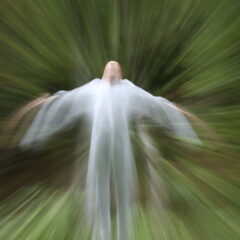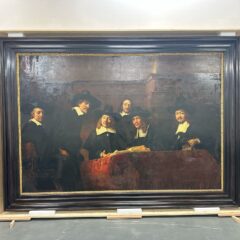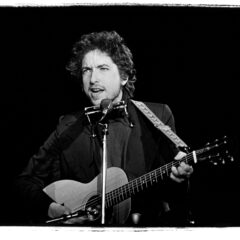To the Moon… and Beyond – The Distance One Polish Artist Would Go for Inspiration

That is what I’ve always wanted my art to be…a touching message, inspiring people to take a deeper look at the world, search for profound meaning and engage in dialogue.
Wieslaw Borkowski
Wieslaw Borkowski’s fascination with Asian culture, like that of many foreign expats living in Asia, began at a young age after encountering Asian films and Japanese animation. He was drawn to the exotic styles and themes of mythical stories in anime like Dragon Ball, and sketching and recreating these characters became his first foray into art.On an exchange trip to the Boston College High School, his interest in China deep- ened when he was able to take his first formal classes in Chinese Language. It was there he got his Chinese Name, Baiwei (白薇), which he later transfigured to 白尾 meaning “White Tail.” He said: “I remember how freeing it was to have the opportunity to follow my interests and study whatever I wanted. Those short few weeks in America really fostered a desire to travel and live abroad in China.”
This interest led to him studying Sinology in Warsaw. His professor saw his love of art and introduced Wieslaw to Stanislaw Tworzydlo (傅铎), a Polish master of Chinese Aesthetic, who had the rare opportunity to take a master’s in Art in China during the 1960s, before the Cultural Revolution began. Wieslaw became Stanislaw’s disciple and learned both Chinese painting and calligraphy. Following University, he won a scholarship to study Chinese language at Zhejiang University, but he admits that the real reason he chose to study in the city of Hangzhou was because it is also home to the prestigious China Art Academy (CAA): “I hadn’t really planned to go to CAA, but I knew I could always make friends there and learn more from them, so I was excited just to be able to visit the campus when I could.”

About halfway through his year in Hangzhou, Wieslaw went out on a limb and applied to take a master’s in Chinese Painting at CAA: “Receiving that letter of acceptance was one of the happiest moments of my entire life. The dream came true.” But the road that followed wasn’t always easy for Wieslaw—he was taking a master’s program fully in Chinese and with no formal university training in fine arts. “It was clear that I was one of the weaker students in the beginning, and the only way I could keep up was to sketch and paint far more often than everyone else. They used to call me ‘Crazy Pole’ because I was compulsively drawing all the time, ” Wieslaw said. With diligence, it wasn’t long before he began impressing the faculty with his command of traditional Chinese style and form, but he had a creative edge and willingness to experiment that helped him stand out from many of his classmates, who mostly preferred to “stay inside the lines.”
This unique balance between the command of traditional form and the creative confidence to bend these conventions helped him to produce a magnificent piece for his final master’s project: “I felt like this work truly summarized my journey to the East and perspective I had gained by that point. I wanted to show the dialogue between West and East that I had become a part of, the multifaceted layers of communication that occur when two very different cultures come into contact with each other. I wanted to show the intimacy and deep meaningful closeness that crossing the lines of cultural divides can produce.” Using a synthesis of religious themes and flawless execution of both Western and Asian styles of figure, landscape, architecture, and fresco painting, Wieslaw impressed the judges with his culminating exhibition at the CAA and became the first foreigner to ever take the top prize in Chinese Painting at this prestigious University:

“I was humbled to have my work recognized in this way; it marked in many ways a milestone for the university, as well, since this was the first time that concept had as strong of a weighting as form. The real honor was seeing how people engaged with the piece. That is what I’ve always wanted my art to be… a touching message, inspiring people to take a deeper look at the world, search for profound meaning and engage in dialogue.”

For Wieslaw, art is a fundamental drive. If followed wholeheartedly, it will take you anywhere, “from the depths of your soul, to as far away as the moon… and beyond.”







